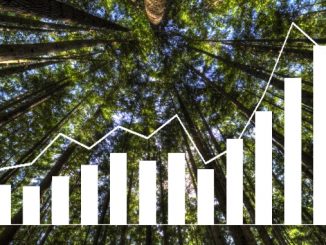
Berlin Hyp has enhanced its green bond reporting by calculating carbon emission savings based on the specific energy mix of buildings in its green finance portfolio, in what is understood to be a first for a green bond issuer. The lender has meanwhile transferred its Green Pfandbrief brand to support the Association of German Pfandbrief Banks in promoting the product.
A year ago Berlin Hyp updated its framework to include metrics and criteria for the energy demand for electricity of a building alongside the energy demand for heating, to better reflect the relative carbon emissions of the portfolio, and these figures are included in this year’s impact report, released today (Monday).
Working with consultants Drees & Sommer, Berlin Hyp has now gone one step further, making the calculations of the energy demand for heating based on the energy source of heating for each building, rather than based on the average energy mix of the respective country.
“If a building uses district heating, for instance, each provider in Germany has a different energy mix, including more or less fossil ingredients,” said Bodo Winkler, head of funding and investor relations at Berlin Hyp. “We now have sufficient data in our systems to be able to differentiate between these, and to use the specific energy mix per building, and no longer this more general approach.”
District heating in Hamburg, for example, produces twice as many carbon emissions (0.146kg CO2/kWh final energy demand) as Karlsruhe (0.073kg).
“By tackling individual buildings, we’ve brought our impact reporting to a new level,” added Winkler.
Compared with a German Energy Savings Regulation (EnEV) baseline, and with avoided carbon emissions allocated proportionally to Berlin Hyp’s initial financing share, its green finance portfolio achieved savings of 21.58 tonnes of CO2 per million euros invested per year, or 116,000 per year in absolute terms.
“We at Berlin Hyp will continue to invest time, effort and money in the development of our green bonds,” said Gero Bergmann, member of the board of management responsible for markets at Berlin Hyp (pictured), “not least in order to keep offering our green bond investors sustainable and convincing products that are based on the latest market findings.”
 The bank’s green finance portfolio grew 18.5% in the year to end-February 2019 and now totals EUR3.5bn, comprising 122 buildings, while Berlin Hyp has six green bonds totalling EUR3bn outstanding, making it the most active green bond issuer among European commercial banks. The green finance portfolio now constitutes over 16% of the bank’s overall lending, putting it on track to achieve its goal of reaching a 20% target by the end of 2020.
The bank’s green finance portfolio grew 18.5% in the year to end-February 2019 and now totals EUR3.5bn, comprising 122 buildings, while Berlin Hyp has six green bonds totalling EUR3bn outstanding, making it the most active green bond issuer among European commercial banks. The green finance portfolio now constitutes over 16% of the bank’s overall lending, putting it on track to achieve its goal of reaching a 20% target by the end of 2020.
Berlin Hyp has also committed on a best efforts basis to try to invest an amount equivalent to the proceeds of its green bonds to new green assets over the life of each bond. It achieved this goal in respect of its first three green bonds within a year of their issuance, with a further EUR1.194bn required to reach the target in respect of the latest three, which do not mature until 2025 (a green Pfandbrief), 2027 and 2028 (senior unsecured bonds).
Berlin Hyp has meanwhile transferred to the Association of German Pfandbrief Banks (vdp) the rights to the Grüner Pfandbrief and Green Pfandbrief trademarks, which it established upon launching the first green covered bond in 2015. The www.green-pfandbrief.com and www.gruener-pfandbrief.de websites are also being transferred by Berlin Hyp to the vdp.
The transfers will allow other issuers to use the names – thus far they have been required to seek Berlin Hyp’s permission – and have been made in conjunction with the vdp establishing a working group to develop minimum standards for Green Pfandbriefe, while the association is also acting as the national hub for the Energy Efficiency Mortgages Initiative (EEMI).
“We are confident that it will soon be possible to publish the first standards,” said Bergmann. “German Pfandbrief banks are set to send a clear and powerful signal in times in which the green bond market and the covered bond sector are preparing for increasingly well-defined guidelines thanks to the efforts surrounding EU taxonomy and the EEMI.”



